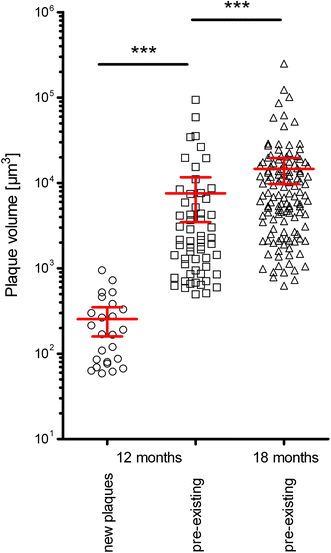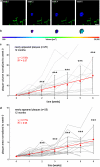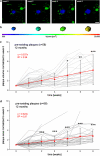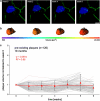In vivo multiphoton imaging reveals gradual growth of newborn amyloid plaques over weeks
- PMID: 21136067
- PMCID: PMC3038220
- DOI: 10.1007/s00401-010-0787-6
In vivo multiphoton imaging reveals gradual growth of newborn amyloid plaques over weeks
Abstract
The kinetics of amyloid plaque formation and growth as one of the characteristic hallmarks of Alzheimer's disease (AD) are fundamental issues in AD research. Especially the question how fast amyloid plaques grow to their final size after they are born remains controversial. By long-term two-photon in vivo imaging we monitored individual methoxy-X04-stained amyloid plaques over 6 weeks in 12 and 18 months old Tg2576 mice. We found that in 12 months old mice, newly appearing amyloid plaques were initially small in volume and subsequently grew over time. The growth rate of plaques was inversely proportional to their volume; thus amyloid plaques that were already present at the first imaging time point grew over time but slower compared to new plaques. Additionally, we analyzed 18 months old Tg2576 mice in which we neither found newly appearing plaques nor a significant growth of pre-existing plaques over 6 weeks of imaging. In conclusion, newly appearing amyloid plaques are initially small in size but grow over time until plaque growth can not be detected anymore in aged mice. These results suggest that drugs that target plaque formation should be most effective early in the disease, when plaques are growing.
Figures






References
Publication types
MeSH terms
Substances
LinkOut - more resources
Full Text Sources
Medical

